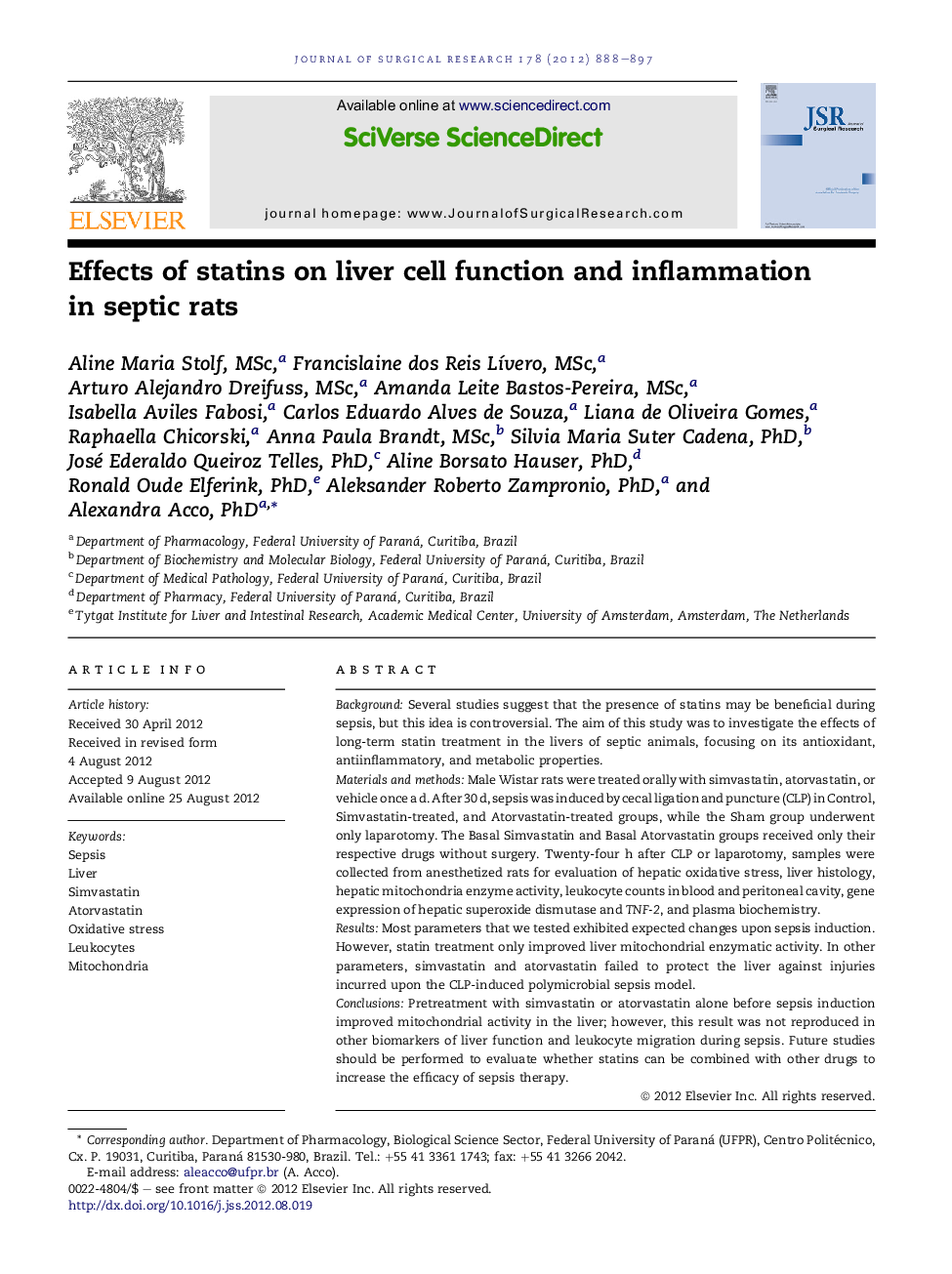| Article ID | Journal | Published Year | Pages | File Type |
|---|---|---|---|---|
| 6254575 | Journal of Surgical Research | 2012 | 10 Pages |
BackgroundSeveral studies suggest that the presence of statins may be beneficial during sepsis, but this idea is controversial. The aim of this study was to investigate the effects of long-term statin treatment in the livers of septic animals, focusing on its antioxidant, antiinflammatory, and metabolic properties.Materials and methodsMale Wistar rats were treated orally with simvastatin, atorvastatin, or vehicle once a d. After 30 d, sepsis was induced by cecal ligation and puncture (CLP) in Control, Simvastatin-treated, and Atorvastatin-treated groups, while the Sham group underwent only laparotomy. The Basal Simvastatin and Basal Atorvastatin groups received only their respective drugs without surgery. Twenty-four h after CLP or laparotomy, samples were collected from anesthetized rats for evaluation of hepatic oxidative stress, liver histology, hepatic mitochondria enzyme activity, leukocyte counts in blood and peritoneal cavity, gene expression of hepatic superoxide dismutase and TNF-2, and plasma biochemistry.ResultsMost parameters that we tested exhibited expected changes upon sepsis induction. However, statin treatment only improved liver mitochondrial enzymatic activity. In other parameters, simvastatin and atorvastatin failed to protect the liver against injuries incurred upon the CLP-induced polymicrobial sepsis model.ConclusionsPretreatment with simvastatin or atorvastatin alone before sepsis induction improved mitochondrial activity in the liver; however, this result was not reproduced in other biomarkers of liver function and leukocyte migration during sepsis. Future studies should be performed to evaluate whether statins can be combined with other drugs to increase the efficacy of sepsis therapy.
